Reefer Tips For Rookies
Topic 16411 | Page 2
Here's another thread we got going with great info
Here's a little visual tutorial of what I was talking about. Since Interstate only uses Thermo King reefers, I can't speak to the how-to for Carrier units, but this should give the newbies (or even veterans who've never delved into the menus before) an idea of what I meant.
So, from the default screen:
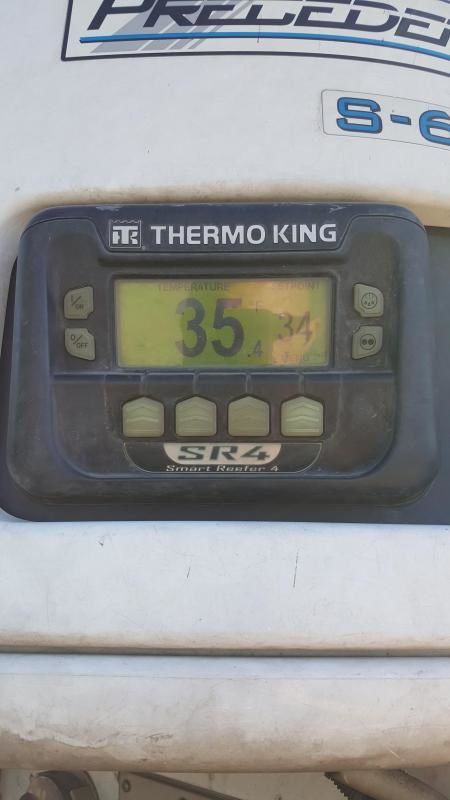
Push the button that says "menu." You should see something that looks like this:
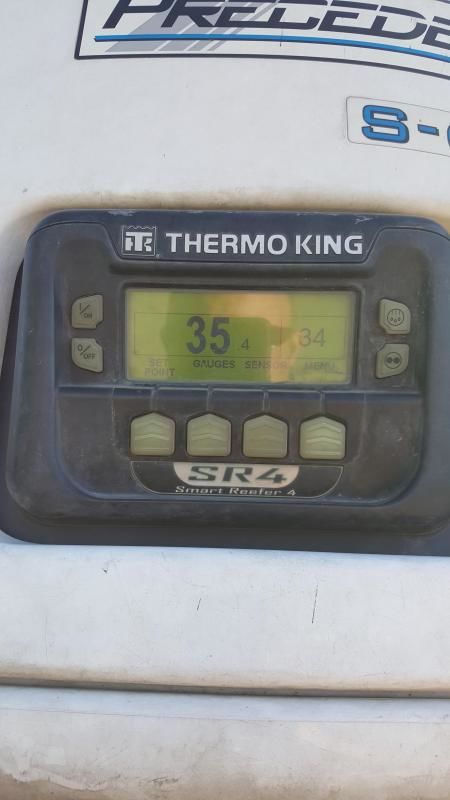
Push the button that says "gauges." A screen like this should pop up:
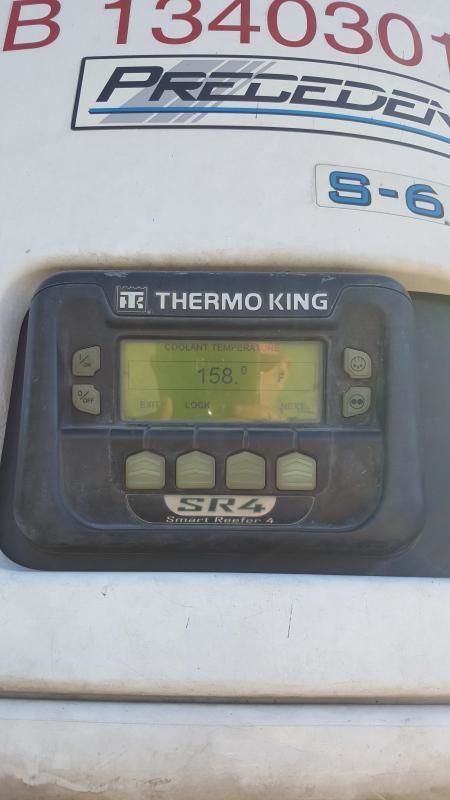
Keep pushing the "next" button until you see this screen:
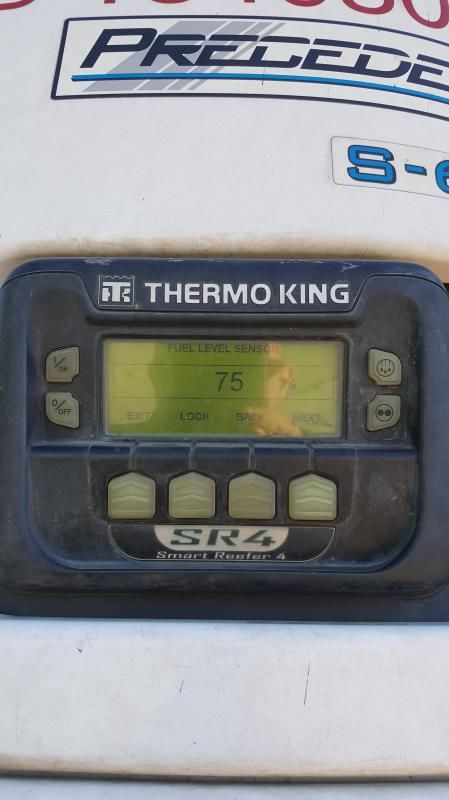
Voila! A quick and easy way to see how much fuel is in your reefer no matter how scuzzy the gauge on the tank is. Unless the fuel level sensor itself is broke, in which case you're boned and the trailer should be taken to the shop anyway.
Again, this only specifically applies to Thermo King units, but I'm sure Carrier has a similar function built in somewhere.
Interstate:
Commercial trade, business, movement of goods or money, or transportation from one state to another, regulated by the Federal Department Of Transportation (DOT).
Reefer:
A refrigerated trailer.

Thank You. Stevens runs exclusively Thermo King, so this will be useful for me the next time I run into a problem unit.
Winter is upon us which means cold weather and dead batteries.
Be sure to us antigel in your reefer fuel tank, then fuel to mix it. If not the fuel will gel up and clog everything then shut down. You also need to put a quart in your tractor when fueling (depending on tank size, read labels).
We've been told never to use HOWES, it doesn't work.
When starting a reefer, be sure to let it run for a awhile before running the pretrip setting. The cold will give you an "electrical current fail" if not. If you get any failed test message dispatch or road assist.
Always remember dead batteries can be jumped by your truck or even jump your truck with the reefer...so have cables.
TA and Petro have reefer batteries but will not repair other issues. Know your manufacturer so you can find a dealer near you...AFTER you message your road assist people ;)
Reefer:
A refrigerated trailer.
Winter is upon us which means cold weather and dead batteries.
Be sure to us antigel in your reefer fuel tank, then fuel to mix it. If not the fuel will gel up and clog everything then shut down. You also need to put a quart in your tractor when fueling (depending on tank size, read labels).
We've been told never to use HOWES, it doesn't work.
When starting a reefer, be sure to let it run for a awhile before running the pretrip setting. The cold will give you an "electrical current fail" if not. If you get any failed test message dispatch or road assist.
Always remember dead batteries can be jumped by your truck or even jump your truck with the reefer...so have cables.
TA and Petro have reefer batteries but will not repair other issues. Know your manufacturer so you can find a dealer near you...AFTER you message your road assist people ;)
I don't know who's telling you not to use Howe's or why, but they're full of it. I've used Howe's numerous times over the years, in temps as low as -30°F, and never had any problems. It works fine.
Reefer:
A refrigerated trailer.

Winter is upon us which means cold weather and dead batteries.
Be sure to us antigel in your reefer fuel tank, then fuel to mix it. If not the fuel will gel up and clog everything then shut down. You also need to put a quart in your tractor when fueling (depending on tank size, read labels).
We've been told never to use HOWES, it doesn't work.
When starting a reefer, be sure to let it run for a awhile before running the pretrip setting. The cold will give you an "electrical current fail" if not. If you get any failed test message dispatch or road assist.
Always remember dead batteries can be jumped by your truck or even jump your truck with the reefer...so have cables.
TA and Petro have reefer batteries but will not repair other issues. Know your manufacturer so you can find a dealer near you...AFTER you message your road assist people ;)
I don't know who's telling you not to use Howe's or why, but they're full of it. I've used Howe's numerous times over the years, in temps as low as -30°F, and never had any problems. It works fine.
Considering Rainy works for Prime...probably they are.
Reefer:
A refrigerated trailer.

Thanks rainy much appreciated!!!
Prime does tell us not to use it...but...one of my friends who is a trainer at Stevens and been driving for 20+ years used to use it until he got stuck in the cold in the middle of nowhere. He's a lease op who really takes care of his truck for the obvious reasons. The repair bill was staggering. The mechanic told him "its OK until you get in extreme temps". What extreme temps are who knows, but why risk it? Another Prime friend also was gelled and it wasn't fun. I felt bad for her cause she was so frustrated she called me crying and yelling.
But now I'm wondering if it has to do with the FL? Now that I'm thinking about it, all of the complaints I heard were in FL.
Fatsquatch what do you drive? Is there something in one make/model that would prevent it from working? Like a material in the hose lines or tanks or something? Also, all the trucks had APUs , so would Howes possibly clog the APUs or something but not affect the truck?
HOS:
Hours Of Service
HOS refers to the logbook hours of service regulations.APU:
Auxiliary Power Unit
On tractor trailers, and APU is a small diesel engine that powers a heat and air conditioning unit while charging the truck's main batteries at the same time. This allows the driver to remain comfortable in the cab and have access to electric power without running the main truck engine.
Having an APU helps save money in fuel costs and saves wear and tear on the main engine, though they tend to be expensive to install and maintain. Therefore only a very small percentage of the trucks on the road today come equipped with an APU.
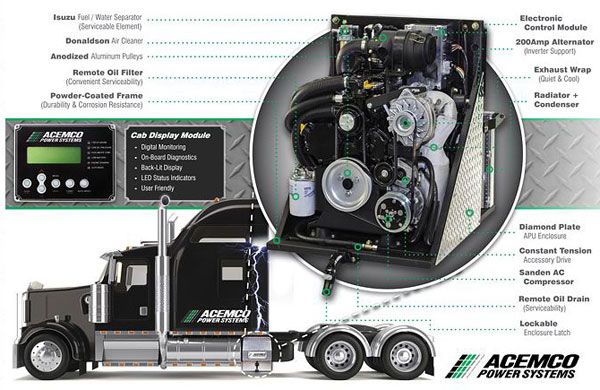
APUs:
Auxiliary Power Unit
On tractor trailers, and APU is a small diesel engine that powers a heat and air conditioning unit while charging the truck's main batteries at the same time. This allows the driver to remain comfortable in the cab and have access to electric power without running the main truck engine.
Having an APU helps save money in fuel costs and saves wear and tear on the main engine, though they tend to be expensive to install and maintain. Therefore only a very small percentage of the trucks on the road today come equipped with an APU.


Did you take home some of that meat. Would probably make some good carne asada burritos
New Reply:
New! Check out our help videos for a better understanding of our forum features

















Preview:
This topic has the following tags:
Hard Lessons Learned Refrigerated Tips for Parking







 TT On Facebook
TT On Facebook
Thank you so much for this wealth of information. I am currently in my PSD phase with a reefer driver and I was planning on going flatbed during TNT and be in the flatbed division but am kind of on the fence now about which division I want to do. This is so helpful.
Reefer:
A refrigerated trailer.
PSD:
Prime Student Driver
Prime Inc has a CDL training program and the first phase is referred to as PSD. You'll get your permit and then 10,000 miles of on the road instruction.
The following is from Prime's website:
Prime’s PSD begins with you obtaining your CDL permit. Then you’ll go on the road with a certified CDL instructor for no less than 75 hours of one-on-one behind the wheel training. After training, you’ll return to Prime’s corporate headquarters in Springfield, Missouri, for final CDL state testing and your CDL license.
Obtain CDL Permit / 4 Days
On-the-Road Instruction / 10,000 Miles
TNT:
Trainer-N-Trainee
Prime Inc has their own CDL training program and it's divided into two phases - PSD and TNT.
The PSD (Prime Student Driver) phase is where you'll get your permit and then go on the road for 10,000 miles with a trainer. When you come back you'll get your CDL license and enter the TNT phase.
The TNT phase is the second phase of training where you'll go on the road with an experienced driver for 30,000 miles of team driving. You'll receive 14¢ per mile ($700 per week guaranteed) during this phase. Once you're finished with TNT training you will be assigned a truck to run solo.